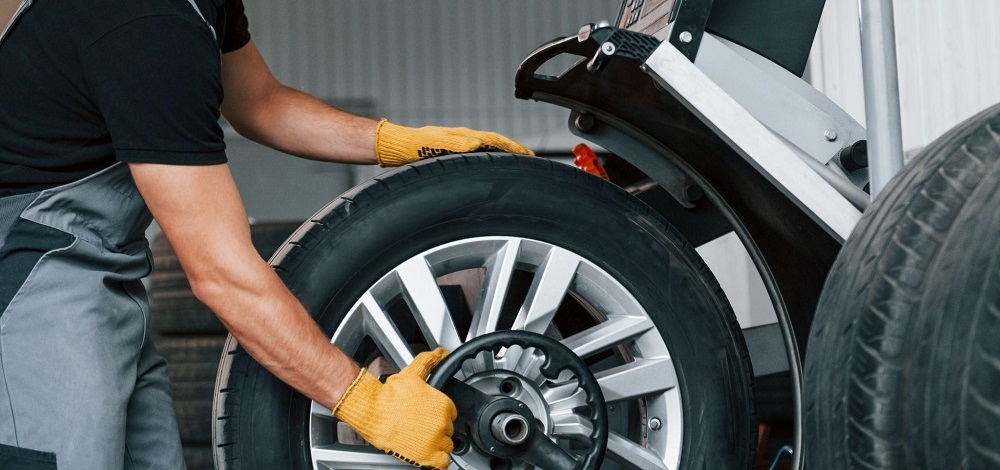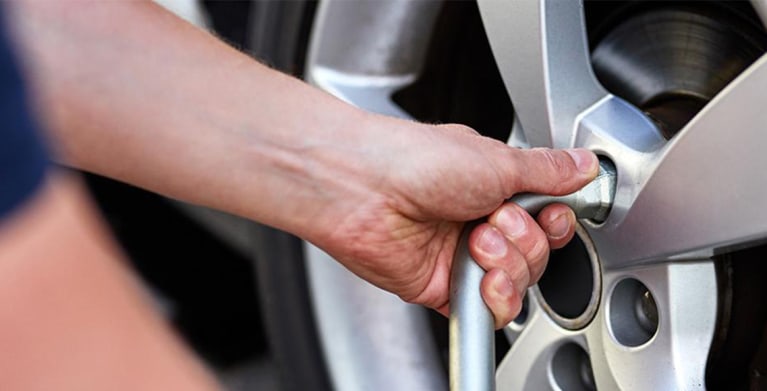Morris Tires: Where GMC Tire Service Fulfills Top Quality
Morris Tires: Where GMC Tire Service Fulfills Top Quality
Blog Article
Tire Solution: The Impact of Climate Condition
When it involves guaranteeing optimal performance and safety and security on the roadway, recognizing the effect of climate condition on tire service is vital. From scorching warm to icy roadways, each weather element can significantly affect tire performance and overall driving experience. By delving into the results of differing climate condition on tires, motorists can gain important understandings that might boost their car's performance and long life. In this discussion, we will certainly check out the elaborate partnership in between weather and tire service, losing light on the value of weather-specific tire maintenance techniques and factors to consider.
Heat and Tire Efficiency
When revealed to high temperatures, tires experience changes in efficiency that can considerably influence automobile safety and security and handling. The heat generated from prolonged driving or heat problems causes the tire rubber to soften, causing reduced walk life and raised wear. As the rubber comes to be softer, the tire's hold when driving diminishes, impacting stopping ranges and total grip. In severe instances, excessive warm can even create tire blowouts, posing a serious safety risk to the automobile and its passengers.

Cold Climate Impacts
Winter conditions can have a significant influence on tire efficiency and security. As temperatures decline, tire rubber can solidify, leading to decreased traction on icy or snow-covered roads. In winter, tires may also lose air stress much more rapidly, which can impact taking care of and gas effectiveness. In addition, chilly temperature levels can trigger tire sidewalls to tense, raising the danger of damage from craters or other roadway hazards.
To mitigate the impacts of winter on tires, it is vital to frequently inspect tire stress and inflate them to the supplier's suggested levels. Using winter season or all-season tires created for winter conditions can likewise enhance traction and grip on icy or snowy roads. Appropriate tire upkeep, consisting of normal evaluations for wear and damage, becomes even much more crucial during chillier months to make sure ideal performance and safety.
Rainy Conditions Effect
During wet problems, tire performance and safety can be dramatically influenced by the wet roadway surface areas and lowered visibility. The step pattern of tires plays a crucial role in preserving traction on damp roads. Tires with damaged footsteps are next page a lot more susceptible to hydroplaning, where a layer of water accumulates between the tire and the road surface, bring about loss of grip. To fight this, vehicle drivers need to regularly inspect their tires for adequate tread depth and consider purchasing tires specifically made for damp conditions.
In addition, stormy weather can also lower visibility, making it testing for chauffeurs to see the road in advance plainly (GMC Tire Service). In such problems, it is important to readjust driving speeds appropriately and keep a safe complying with distance to permit unexpected stops. Properly inflated tires can also assist in maintaining control on damp roadways by giving much better handling and grasp
Snow and Tire Security
When driving in snowy problems, having the ideal tires can make a substantial difference in safety and efficiency. Winter tires are created with unique rubber compounds and step patterns to offer far better grip on snow and ice compared to all-season tires.

In addition, chauffeurs should consider setting up tire chains in severe snowy problems. Tire chains supply added grip by clutching the snow and ice, improving security and control. It is vital to follow producer instructions when making use of and mounting tire chains to prevent damage to the tires and car (GMC Tire Service). By picking the appropriate tires, preserving correct rising cost of living, and thinking about added traction aids like tire chains, chauffeurs can enhance their safety and security when browsing snow-covered roadways.
Weather-Related Tire Upkeep
Weather-related tire maintenance incorporates an array of methods aimed at ensuring optimum tire function and longevity web link in different weather condition situations. One vital facet of weather-related tire maintenance is tire stress law. Checking tire tread routinely and changing tires when walk wear reaches a particular depth is vital for keeping traction and security in negative climate.
Verdict
In verdict, weather condition problems have a considerable influence on tire performance and safety. From warm influencing tire pressure and wear to chilly climate reducing traction, it is essential to consider the climate when maintaining and utilizing tires.
In this conversation, we will certainly discover the elaborate partnership between weather conditions and tire service, losing light on the relevance of weather-specific tire upkeep methods and considerations.

Report this page